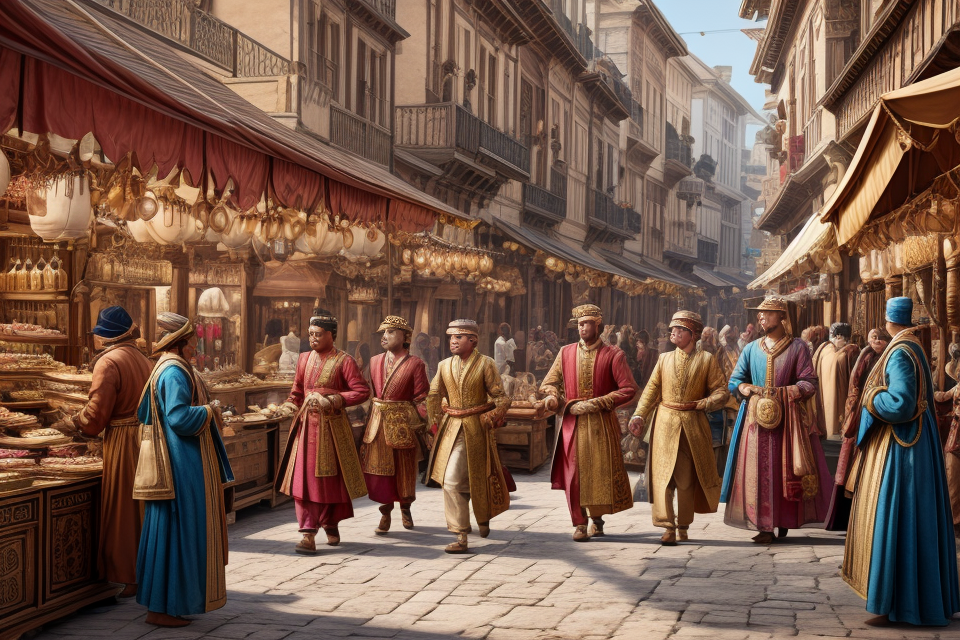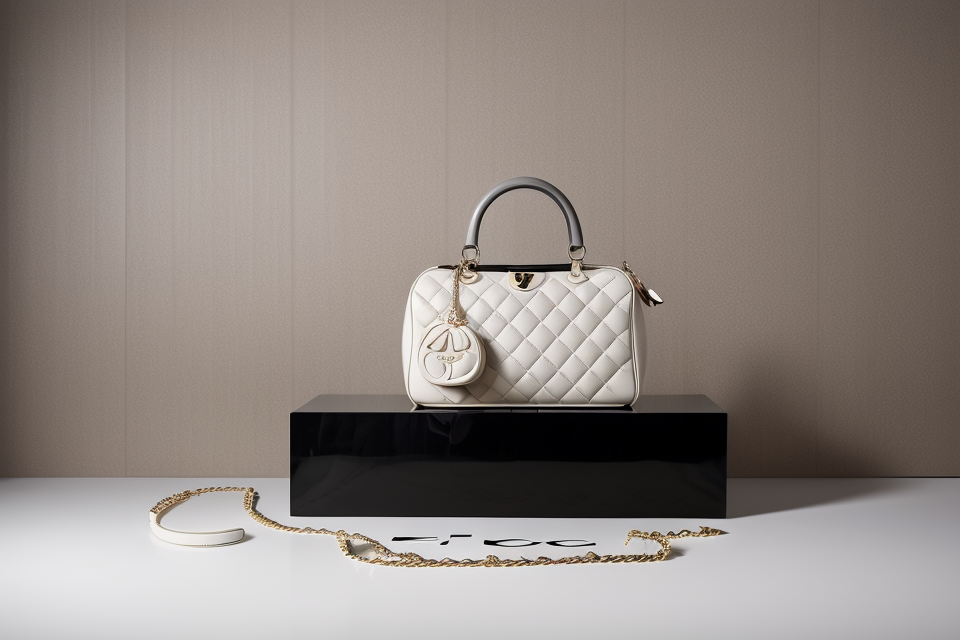
Fashion has been a part of human civilization since time immemorial. It has evolved and changed over the years, and with it, the fashion industry has grown into a multi-billion dollar business. But have you ever wondered who started it all? Who was the first fashion brand in history? In this article, we will explore the origins of fashion and uncover the mystery behind the first fashion brand. Join us as we delve into the world of fashion and discover the brand that set the stage for everything that followed.
The first fashion brand in history is believed to be the House of Worth, founded by Charles Frederick Worth in Paris in 1858. Worth was an Englishman who had trained as a designer under the great couturier, Alexandra Gerard. He was one of the first designers to use live models to showcase his designs, and he was also one of the first to use catalogs to showcase his work. Worth’s designs were known for their simplicity, elegance, and attention to detail, and he quickly gained a reputation as one of the leading fashion designers of his time. The House of Worth continued to be a major force in the fashion industry for many years, and it is still in operation today, although it has changed hands several times over the years.
The Evolution of Fashion Brands
The Origins of Fashion
The Role of Clothing in Early Societies
Clothing has been an essential part of human civilization since time immemorial. In early societies, clothing served both symbolic and functional purposes. It protected individuals from the elements, indicated social status, and reflected cultural values and beliefs. Clothing was often decorated with intricate designs and patterns, which conveyed important information about the wearer’s identity, occupation, and social standing.
Symbolic and Functional Purposes of Clothing
The symbolic and functional purposes of clothing were closely intertwined in early societies. Clothing served as a means of communication, allowing individuals to convey important information about themselves to others. For example, in ancient Greece, the chiton, a simple garment worn by both men and women, was a symbol of citizenship and civic duty. In contrast, the toga, worn by Roman men, was a symbol of power and authority.
In addition to its symbolic function, clothing also served a practical purpose. Clothing protected individuals from the elements, keeping them warm in cold weather and cool in hot weather. In early societies, clothing was often made from natural materials such as animal hides, wool, and linen, which provided excellent insulation and breathability.
The Emergence of Fashion as an Industry
The emergence of fashion as an industry can be traced back to the 19th century, when the Industrial Revolution transformed the way clothing was produced. With the advent of new technologies such as the sewing machine, clothing production became much faster and more efficient, allowing for the mass production of clothing. This led to the rise of department stores and retail, which made fashion accessible to a wider audience.
As fashion became more democratic, it also became more commercialized. Designers began to create collections inspired by current events and cultural trends, and fashion magazines emerged to promote their designs. Fashion shows were introduced to showcase new collections, and celebrities and socialites became the faces of fashion brands.
Today, fashion is a global industry worth billions of dollars, with designers, manufacturers, retailers, and consumers all playing a role in its evolution. Despite its commercialization, fashion remains an important form of self-expression, allowing individuals to communicate their values, beliefs, and identity through their clothing choices.
The First Fashion Brands
The Birth of Haute Couture
Haute couture, which refers to high fashion, emerged in the mid-19th century in Paris, France. It was characterized by the creation of made-to-measure clothing for the elite class. The first haute couture house was the House of Worth, founded by Charles Frederick Worth in 1858. Worth was an Englishman who had settled in Paris and was the first to present fashion shows to showcase his designs.
The House of Worth and the Invention of the Modern Dress
The House of Worth revolutionized the fashion industry by introducing the concept of the modern dress. These dresses were designed to be worn as outer garments rather than inner ones, and they featured a seamless bodice and sleeves that were attached to the dress rather than being separate. The use of the bustle, a protruding back part of a woman’s dress, was also popularized by the House of Worth.
The Rise of Other Haute Couture Houses
The success of the House of Worth led to the rise of other haute couture houses in Paris. Among the most notable were the houses of Lanvin, Chanel, and Patou, all of which were founded in the early 1900s. These houses, along with the House of Worth, became known for their high-quality designs and their ability to cater to the demands of the wealthy and fashionable clients.
In the early 20th century, the influence of haute couture spread beyond France, with designers from other countries such as the United States and Italy also starting to create their own haute couture lines. The rise of department stores and the increasing availability of ready-to-wear clothing, however, began to challenge the dominance of haute couture in the fashion industry.
The Significance of the First Fashion Brand
The Influence of the First Fashion Brand on the Industry
The Establishment of Designer Brands
The first fashion brand, as it is known today, played a crucial role in shaping the fashion industry as we know it today. Its influence extended beyond the establishment of designer brands, and it laid the foundation for the development of the fashion industry as a whole.
The Emergence of Luxury Fashion
The first fashion brand paved the way for the emergence of luxury fashion. Prior to the emergence of this brand, luxury goods were limited to a few select items such as jewelry and fine fabrics. However, the establishment of this brand changed the perception of luxury goods, and it became synonymous with high-quality, high-end fashion.
The Birth of Mass-Market Fashion
The first fashion brand also played a significant role in the birth of mass-market fashion. Prior to the emergence of this brand, fashion was only accessible to the elite, and it was not available to the masses. However, the establishment of this brand made fashion accessible to the masses, and it opened up the fashion industry to a much wider audience.
In conclusion, the first fashion brand in history had a profound influence on the fashion industry. It paved the way for the establishment of designer brands, the emergence of luxury fashion, and the birth of mass-market fashion. Without this brand, the fashion industry would not be what it is today.
The Impact of the First Fashion Brand on Society
The Evolution of Fashion as a Form of Self-Expression
- The earliest forms of fashion were likely driven by practical considerations such as protecting the body from the elements or signifying social status.
- Over time, fashion evolved to become a form of self-expression, allowing individuals to communicate their identity and values through their clothing choices.
The Relationship between Fashion and Identity
- Clothing has long been used as a way to express one’s identity and membership in a particular group or subculture.
- This can be seen in the use of uniforms by military organizations, religious groups, and schools, as well as in the distinctive styles associated with different subcultures such as punk and hip-hop.
The Cultural Significance of Fashion Brands
- Fashion brands have played an important role in shaping cultural norms and values around dress and appearance.
- Brands have also served as a way for individuals to signal their social status and financial resources through the purchase of luxury items.
The Rise of Fashion as a Symbol of Status and Power
- Throughout history, fashion has been used as a way to signal one’s social status and power.
- This can be seen in the use of sumptuary laws, which regulated the type of clothing that could be worn by different social classes, as well as in the fashion choices of royalty and other elite groups.
The Impact of Fashion Brands on Popular Culture
- Fashion brands have had a significant impact on popular culture, influencing everything from music and film to art and literature.
- The rise of fashion as a form of entertainment, with fashion shows and runway events becoming popular spectator sports, has further elevated the importance of fashion brands in popular culture.
The Future of Fashion Brands
The Evolution of the Fashion Industry
The Impact of Technology on Fashion
The Rise of E-commerce and Digital Fashion
In recent years, technology has had a significant impact on the fashion industry. The rise of e-commerce has made it easier for fashion brands to reach a wider audience and expand their customer base. Social media platforms such as Instagram and TikTok have also become powerful marketing tools for fashion brands, allowing them to showcase their products and connect with customers in new ways.
Furthermore, digital fashion has emerged as a new category within the fashion industry. Digital fashion refers to virtual clothing and accessories that can be worn in online games, virtual reality environments, and augmented reality applications. Brands such as Niketown and Forever 21 have embraced digital fashion by launching virtual clothing lines, while platforms such as Roblox and Zepeto have created virtual worlds where users can dress up their avatars in the latest fashion trends.
The Impact of Sustainable and Ethical Fashion
Sustainable and ethical fashion has also become an increasingly important aspect of the fashion industry. Consumers are becoming more conscious of the environmental and social impact of their purchases, and are demanding more transparency and accountability from fashion brands.
As a result, many fashion brands have begun to incorporate sustainable and ethical practices into their business models. This includes using eco-friendly materials, reducing waste and carbon emissions, and ensuring fair labor practices throughout the supply chain. Brands such as Patagonia and Eileen Fisher have been leaders in this area, while new labels such as Everlane and Reformation have gained popularity by prioritizing sustainability and ethical production.
Overall, the fashion industry is constantly evolving, and the rise of technology, sustainable and ethical fashion, and new business models are shaping the future of fashion brands. As the industry continues to grow and change, it will be interesting to see how these trends develop and what new innovations emerge.
The Future of Fashion Brands
The Importance of Innovation and Sustainability
The Need for Responsible and Sustainable Production
The future of fashion brands is largely dependent on their ability to embrace sustainable and responsible production practices. As consumers become increasingly conscious of the environmental impact of their purchases, fashion brands must respond by reducing their carbon footprint and minimizing waste. This includes using eco-friendly materials, implementing circular economy principles, and adopting sustainable manufacturing processes.
The Role of Innovation in Fashion
Innovation is also key to the future of fashion brands. As technology continues to advance, fashion brands must stay ahead of the curve by incorporating new materials, techniques, and production methods. This can include everything from 3D printing and smart textiles to virtual reality and augmented reality experiences.
The Future of Luxury and Mass-Market Fashion
The Continued Evolution of Fashion Brands
The future of fashion brands will see a continued evolution of the industry, with both luxury and mass-market brands seeking to differentiate themselves through unique designs, exceptional quality, and innovative marketing strategies. Brands will need to focus on creating a strong brand identity and cultivating a loyal customer base in order to succeed in a highly competitive market.
The Challenges and Opportunities of the Future Fashion Industry
The future of fashion brands will also be shaped by a number of challenges and opportunities. These include the rise of e-commerce and online shopping, the growth of sustainable and ethical fashion, and the increasing importance of social media and influencer marketing. Brands that are able to adapt to these changes and stay ahead of the curve will be well-positioned for success in the years to come.
FAQs
1. What was the first fashion brand in history?
The first fashion brand in history is believed to be the House of Worth, founded by Charles Frederick Worth in Paris in 1858. Worth was an Englishman who trained under the famous French fashion designer, Jean-Baptiste Henri Lacordaire, and he went on to become one of the most successful and influential fashion designers of the 19th century. His fashion house catered to the elite class of society, including royalty and socialites, and was known for its high-quality fabrics, intricate designs, and attention to detail.
2. What made the House of Worth the first fashion brand?
The House of Worth was considered the first fashion brand because it was the first fashion house to use the term “brand” to describe its identity and reputation. Worth was a pioneer in the fashion industry, and he recognized the importance of creating a unique identity for his fashion house that would set it apart from his competitors. He achieved this by focusing on quality, innovation, and consistency in his designs, and by establishing a strong reputation for excellence and luxury.
3. How did the House of Worth impact the fashion industry?
The House of Worth had a significant impact on the fashion industry, as it helped to establish the concept of luxury fashion and high-end fashion design. Worth’s designs were known for their elegance, sophistication, and attention to detail, and his fashion house set the standard for luxury and quality in the industry. Many other fashion designers and houses followed in his footsteps, and the concept of the fashion brand and the importance of creating a unique identity for a fashion house became a central aspect of the fashion industry.
4. What was the legacy of the House of Worth?
The legacy of the House of Worth is that it established the foundation for the modern fashion industry and paved the way for the development of luxury fashion brands. The fashion house was a pioneer in the industry, and its focus on quality, innovation, and luxury set the standard for high-end fashion design. Although the House of Worth no longer exists, its legacy continues to influence the fashion industry, and its impact can still be seen in the design and branding of many contemporary fashion houses.

